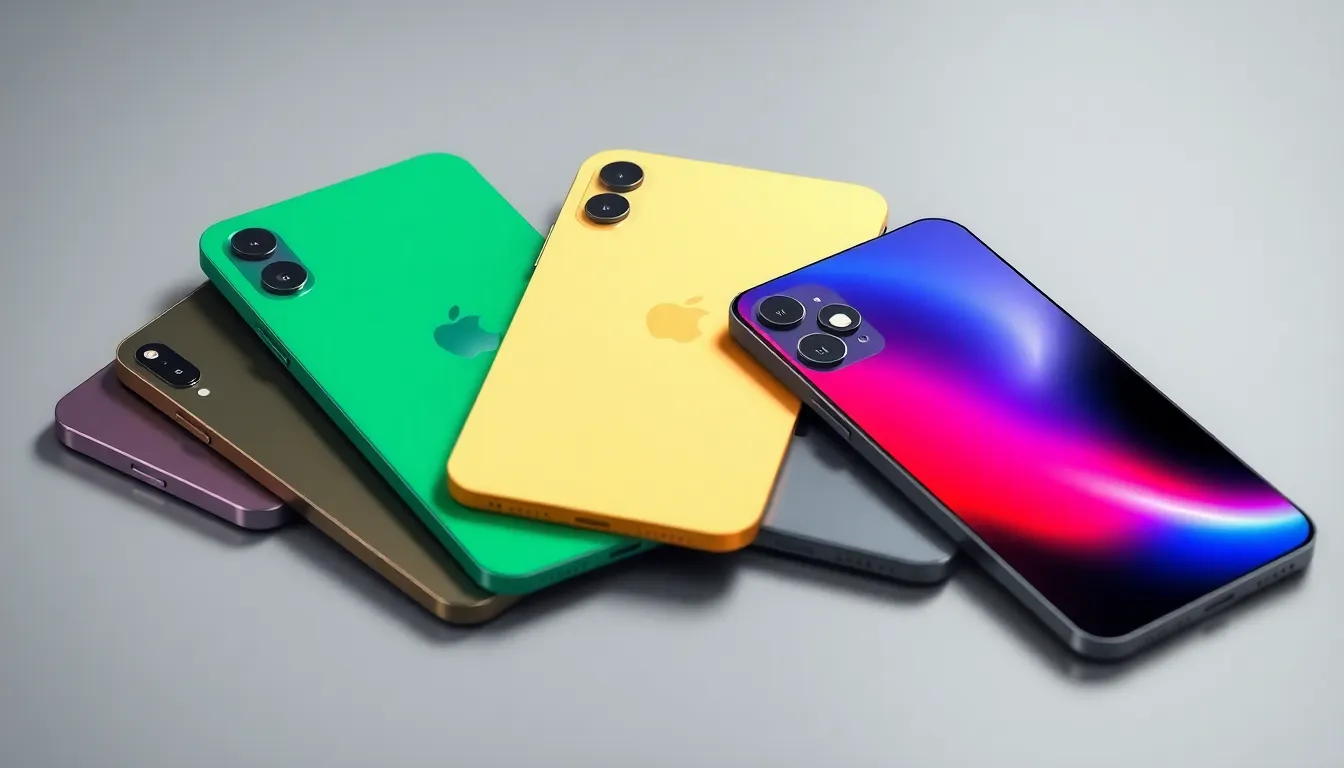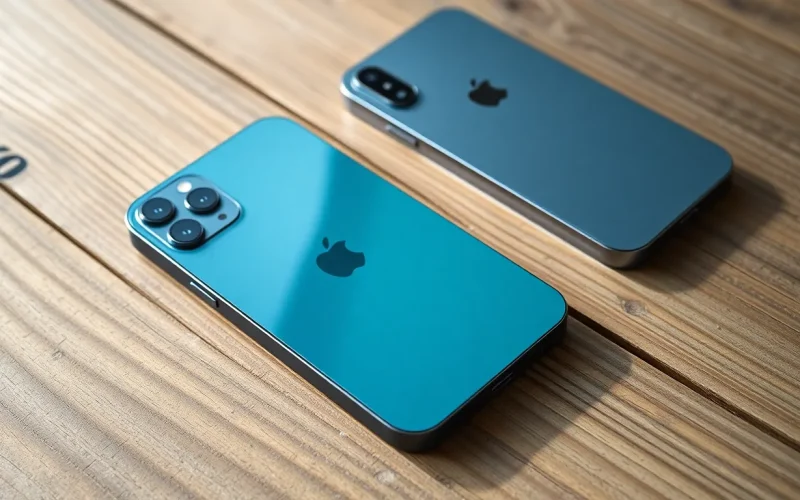Table of Contents
ToggleWhen it comes to smartphones, the battle between the iPhone 11 and iPhone XS is like choosing between a fine wine and a fancy cheese—both are great, but one’s definitely got a fresher taste. Launched in 2019, the iPhone 11 strutted onto the scene with a slew of impressive upgrades, leaving its predecessor, the XS, feeling a bit like last season’s fashion.
But what does “newer” really mean in the world of tech? Is it just about the release date or the shiny new features? With a dual-camera system, improved battery life, and that oh-so-fun night mode, the iPhone 11 is ready to take center stage. Dive into this comparison to discover if the iPhone 11 truly outshines the XS or if it’s just a case of new paint on an old car.
Overview of iPhone Models
Apple’s iPhone lineup features several models, each designed with unique specifications and upgrades. The iPhone 11, released in September 2019, presents notable advancements over the iPhone XS, which debuted in September 2018.
Specifications differ significantly between the two models. iPhone 11 boasts a dual-camera system that enhances photography capabilities. Night mode further enriches low-light photography, allowing users to capture clearer images compared to those taken with iPhone XS.
Additionally, battery life is improved in iPhone 11, providing an estimated 17 hours of talk time versus the iPhone XS, which offers approximately 14 hours. Performance also varies, as the A13 Bionic chip in iPhone 11 ensures faster processing and smoother multitasking compared to the A12 Bionic chip in iPhone XS.
Screen sizes remain comparable, with both models featuring a 6.1-inch display for iPhone 11 and a 5.8-inch display for iPhone XS. Color options attract users; iPhone 11 offers more vibrant colors, including green and purple, while iPhone XS presents a more classic gold, silver, and space gray.
iOS updates support both devices, yet newer features may favor iPhone 11 due to its later release. For those seeking cutting-edge functionality, the iPhone 11 offers a superior experience that aligns with modern smartphone demands.
Comparisons reveal iPhone 11 stands out in multiple categories, proving itself as a more advanced model than the XS. Examining these differences provides insights into which device may better fit individual preferences and needs.
Key Differences Between iPhone 11 and iPhone XS

The iPhone 11 and iPhone XS showcase distinct differences across various aspects. Their specifications and features play a crucial role in determining which model suits user needs.
Design and Build Quality
Both models possess sleek designs, but the iPhone 11 offers more color choices, including green, yellow, purple, black, and white. Constructed with durable glass, the iPhone 11 is rated IP68 for water resistance, allowing immersion in shallow water for up to 30 minutes. The iPhone XS, while also stylish, comes in fewer colors: gold, silver, and space gray. Although it features a similar water resistance rating, the iPhone 11 feels slightly more robust given its design upgrades.
Display Features
Display quality stands out in both models. The iPhone 11 has a Liquid Retina HD display measuring 6.1 inches, while the iPhone XS sports a 5.8 inch Super Retina HD display. Higher pixel density in the XS provides sharper images, yet the iPhone 11’s display enables vibrant color reproduction and wider viewing angles. Both displays support True Tone technology, which adjusts screen brightness based on surrounding conditions, enhancing user comfort.
Performance and Hardware
Performance differentiates the two models significantly. Equipped with the A13 Bionic chip, the iPhone 11 delivers faster processing speeds and improved energy efficiency compared to the A12 Bionic chip in the iPhone XS. Enhanced graphics performance in the iPhone 11 benefits gaming and resource-heavy applications. Multitasking also feels smoother on the iPhone 11, making it a preferable choice for users eager for productivity.
Camera Capabilities
Camera performance plays a crucial role in smartphone appeal. Both the iPhone 11 and iPhone XS come equipped with advanced camera technologies, but the iPhone 11 offers notable enhancements.
iPhone 11 Camera Specifications
The iPhone 11 features a dual-camera system with 12 MP wide and ultra-wide lenses. Night mode capabilities significantly improve low-light photography, delivering clearer and brighter images. Each shot benefits from Smart HDR, allowing for better detail in highlights and shadows. Users enjoy 4K video recording at up to 60 fps, enhancing the overall videography experience. Portrait mode also includes advanced lighting effects for professional-quality portraits.
iPhone XS Camera Specifications
In contrast, the iPhone XS houses a dual-camera setup as well, including a 12 MP wide and telephoto lens. Optical image stabilization ensures sharp images even in less-than-perfect conditions. Smart HDR capability enhances image quality but lacks the advanced night mode found in the iPhone 11. The iPhone XS captures 4K video at up to 60 fps, delivering smooth, high-quality video content. Portrait mode boasts impressive results, though it doesn’t rival the iPhone 11’s improvements in lighting effects.
Software and Updates
Both the iPhone 11 and iPhone XS run on iOS, but the iPhone 11 benefits from a newer software support timeline. It launched with iOS 13, offering features like Dark Mode and improved privacy settings. Users of the iPhone XS, which originally shipped with iOS 12, still receive updates but may miss some enhancements designed for the iPhone 11.
Apple typically provides software updates for devices for about five years. The iPhone 11, being the newer model, is likely to receive updates for a longer duration. Security patches and new features often arrive with each update, ensuring devices remain secure and functional.
The A13 Bionic chip in the iPhone 11 enhances performance when running the latest software, allowing for smoother multitasking and app usage. On the other hand, the A12 Bionic chip in the iPhone XS may not optimize future updates as effectively, potentially leading to slower performance over time.
Compatibility with newer apps and features favors the iPhone 11. App developers often optimize software for the latest hardware for the best performance. Users seeking longevity and support might prefer the iPhone 11 for its enhanced software capabilities.
In terms of experience, users of the iPhone 11 can access the latest functionalities more seamlessly. Regular updates for both models enhance overall security and interface improvements. Ensuring a device stays up-to-date with software provides both security enhancements and access to new features, making it essential for users to consider when choosing between these two models.
User Experience and Reviews
User reviews highlight the noticeable differences in experiences between the iPhone 11 and iPhone XS. Many users appreciate the iPhone 11 for its superior camera capabilities, particularly for low-light photography. The night mode feature in the iPhone 11 has garnered positive feedback, with users noting significant improvements in photo quality. Users also mention the dual-camera system, which includes wide and ultra-wide lenses, enhancing versatility for capturing a variety of subjects.
Battery performance often stands out in reviews. The iPhone 11’s improved battery life of approximately 17 hours of talk time often receives acclaim, particularly among users who engage in heavy phone use. Comparatively, the iPhone XS’s 14-hour talk time generally falls short for those who prioritize all-day usage.
In terms of device performance, the A13 Bionic chip has impressed users with its efficiency and speed. The smooth multitasking capabilities stand out as a major advantage over the iPhone XS, which utilizes the A12 Bionic chip. Users often report a noticeable speed difference during gaming and app usage, where the iPhone 11 excels in handling demanding tasks.
Regarding software, users appreciate the longevity of updates that the iPhone 11 promises. With its launch on iOS 13, it offers features such as Dark Mode and enhanced privacy settings, making it more appealing for tech-savvy users. The iPhone XS, while still functional, may miss some future enhancements due to being released with iOS 12.
Overall, user experiences emphasize the iPhone 11 as a preferable choice for those seeking modern features, enhanced camera options, and improved battery life.
The iPhone 11 clearly outshines the iPhone XS in several key areas. With its advanced camera system improved battery life and more powerful A13 Bionic chip it’s designed to meet the needs of modern users. Those seeking enhanced photography capabilities and longevity in software updates will find the iPhone 11 to be the superior choice.
While both devices have their merits the iPhone 11’s upgrades make it a more appealing option for anyone looking to invest in a smartphone that offers cutting-edge technology and performance. Choosing the iPhone 11 ensures a more satisfying user experience in today’s fast-paced digital world.





